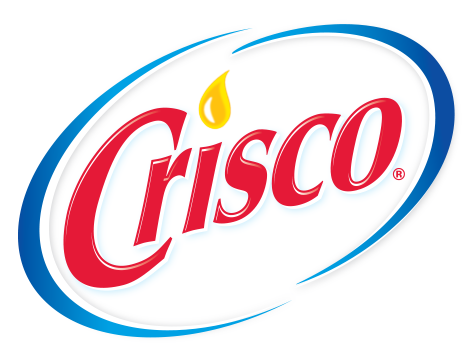Have a question about a Crisco® product? You’ve come to the right place. If you don’t find what you’re looking for here, don’t hesitate to drop us a line.
| Crisco Products Shelf Life & Manufacture Code Locations | ||||
|---|---|---|---|---|
| Shortening Can | Shortening Sticks | Crisco Oil | Crisco Spray | |
| Unopened | 2 years from manufacture date | 2 years from manufacture date | 2 years from manufacture date | 2 years |
| Opened | about 1 year | about 6 months | about 1 year | 2 years |
| Code Location | bottom of can | side of plastic tub | side of bottle back label | bottom of can |
Crisco shortening has a honeycomb structure with air and liquid oils suspended in the solids. This makes it lighter than butter or margarine – one pound of Criscoshortening actually equals 2-1/3 cups instead of 2. But you can still measure Criscoshortening in the same way, by tablespoon and cup portions, to get the right amount for your recipe.
| 3 teaspoons | = 1 tablespoon |
| 4 tablespoons | = 1/4 cup |
| 5-1/3 tablespoons | = 1/3 cup |
| 8 tablespoons | = 1/2 cup |
| 12 tablespoons | = 3/4 cup |
| 16 tablespoons | = 1 cup |
| 2 cups | = 1 pint |
| 4 cups | = 1 quart |
| 16 cups | = 1 gallon |
Frying – Sure! Go ahead and use melted shortening for fried foods.
Salad dressing – Because shortening will resolidify when it cools, we don’t recommend it as a salad topper.
Baking – Shortening can be melted and then measured according to the recipe. It should be allowed to cool slightly before adding to other ingredients.
In general, you can substitute Crisco shortening for butter or margarine in equal amounts (1 cup Crisco shortening = 1 cup butter or margarine). Not only does Crisco shortening have 50% less saturated fat than butter and 0g trans fat per serving, it gives you higher, lighter-textured baked goods.
A few exceptions in which you can’t substitute: No-bake cookie recipes
Recipes, such as candies and fudge, where butter or margarine is heated/melted and sugar is added/dissolved.
There are a few minor changes that can make a big difference in your finished pie crust. First, make sure all of the ingredients, tools and preparation surfaces are cold. For example, use ice cold water instead of room temperature water, use cold Criscoshortening, place the rolling pin in the refrigerator 30 minutes prior to rolling out the pie crust, etc. Second, try to handle the dough as little as possible to keep all of the ingredients as chilled as possible. For a better pie crust recipe, click here.
